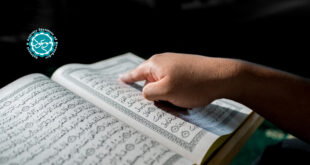Excerpts made from Imam Mahdi the Just Leader of Humanity]On the appointed evening friends came together at Dr. Fahimi’s house. After the usual formalities and enquiries the session began. Mr. Hoshyar began to speak.
Mr. Hoshyar: There is another matter worth considering as further evidence and related to the topic about the origins of Mahdiism.
These are the accounts of individuals claiming to be the Mahdi in the past, whose names have been preserved in the historical sources. These reports suggest that the subject was not only wide spread, but also well authenticated in the early days of Islam. To clarify my point for all those who are gathered here I will mention some of these pseudo-Mahdis.
Muhammad b. Hanafiyya was regarded as the Mahdi by some Muslims. He was believed to be alive and living an invisible existence in Mount Radwa. He would appear in the future and would fill the earth with justice and equity.[1] A group called Jarudis among the Zaydis believed that Muhammad b. ‘Abd Allah b. Hasan was the Mahdi, and that he was in concealment. They awaited his return.[2] The Nawusi’s believed that Imam Ja’far Sadiq was the Mahdi, and that he was alive and in occultation. The Waqifis believed that Imam Musa b. Ja’far had not died and was in occultation. He would appear in the future and would fill the earth with justice and equity.[3]A group among the Isma’ilis believed that Isma’il had not died. Rather, he had been declared dead out of fear (taqiyya) of persecution. The Baqiris regarded Imam Muhammad Baqir to be alive and believed that he was the promised Mahdi. The Muhammadis believed that following the death of Imam ‘Ali Naqi, the Imam was his son Muhammad. This they believed in spite of the fact that he died during his father’s life time. They, furthermore, believed that he was alive and that he was the promised Mahdi.[4] The Jawaziyya believed that the twelfth Imam Hujjat b. al-Hasan had a son and that he was the promised Mahdi. The Hashimis maintained that ‘Abd Allah b. Harb Kindi was the Imam. Alive but in occultation, they expected that he would appear in the future. The Mubarakis, among the Isma’ilis, regarded Muhammad b. Isma’il as a living Imam in occultation.[5]The Yazidi faction maintained that Yazid has ascended to heaven, and will return in the future to fill the earth with justice and equity. The Isma’ilis say that the Mahdi mentioned in the traditions is the same as Muhammad b. ‘Abd Allah, known as Mahdi, who became the ruler in Egypt and North Africa. To support their belief they cite the tradition of the Prophet in which he said that in the year 300 the sun would rise from the west.[6]A group of the Imamis believed that Imam Hasan ‘Askari was alive and that he was the Qa’im. He was living an invisible existence and would appear in the future and would fill the earth with justice and equity. Another group among them held that Imam Hasan ‘Askari has died but would come back to life later on and would rise because the meaning of qa’im is ‘to rise after death.'[7]The Qarmatis regarded Muhammad b. Isma’il to be the promised Mahdi. They believed that he was alive and lived in Anatolia. The followers of Abu Muslim believed that Abu Muslim was the living Imam who was in concealment. A group believed that Imam Hasan ‘Askari was the Mahdi and that he became alive after death. He continues to live in this state until the time comes when he will fill the earth with justice and equity.[8]Manipulation of the Beliefs of the People
These are the names of the people who claimed to be the Mahdi in the early history of Islam. A number of ignorant people accepted their claim and regarded them to be the promised Mahdi. However, the majority of these groups have perished and there remains nothing more than their mention in the books on history. Since that time a number of individuals belonging to Hashimite or non-Hashimite clans from different regions and countries of the world have emerged claiming to be the promised Mahdi. Historically, such claims have led to insurrections and revolutions, with much bloodshed and destruction of human life.
It is possible to surmise from events related to the appearances of the false messiahs that the subject of Mahdiism and the emergence of the divine savior were among the well established religious truths among Muslims, who anxiously awaited for the appearance of the Mahdi. They also regarded his victory and the defeat of his enemy as imminent. Such expectations of the people became the major source for some ambitious and crafty individuals to manipulate their simple and pure faith — a faith which stemmed from the teachings of the Islamic revelation — and lay claim to the title of the Mahdi. It is likely that some of these individuals had no evil design and merely wanted to redress the wrongs committed against the people. Indeed, some of them did not even claim to be the promised deliverer. Rather, it was the common people who, due to ignorance, intolerable living conditions, and an impatience regarding their expectations about the appearance of the Mahdi, took these false messiahs to be the awaited Mahdi.
Fabrication of the Traditions
It was, unfortunately, these conditions that caused circulation of the traditions describing and praising the Mahdi and foretelling the signs of his appearance. These traditions were uncritically accepted and reported in the books. Any impartial scholar can discover these fabricated traditions by undertaking to investigate the historical accounts of the appearance of these pseudo-Mahdis and then to examine the hadith compilations that deal with the characteristics of the Mahdi. Such, for instance, is the case with the tradition in which the Prophet says:
The world will not come to an end until God sends a man from my family, whose name will be the same as mine, and whose father’s name will be the same as my father’s. He will fill the earth with justice and equity as it is filled with injustice and tyranny.[9]In this hadith the Mahdi’s father is introduced as possessing the name of the Prophet’s father, that is, ‘Abd Allah. This contradicts many traditions that mention Mahdi’s father to be Hasan. Hence, it is possible to maintain that this hadith was circulated by those who regarded Muhammad b. ‘Abd Allah b. Hasan to be the Mahdi. They must have added the sentence `whose father’s name will be the same as my father’s’ to the original hadith. This is supported by the view held by Muhammad b. Yusuf in his book entitled: al-Bayan. He writes that Tirmidhi relates the same tradition in his compilation without mentioning the additional sentence ‘whose father’s . . .’. Abu Dawud also reports the same tradition without the additional sentence.
In another tradition recorded by Abu al-Faraj in his Maqatil al-talibiyyin Abu Hurayra is reported to have heard the Prophet saying: “Indeed, the Mahdi’s name will be Muhammad b. ‘Abd Allah and he will be afflicted with a speech defect.”[10] This tradition is also a forgery of those who supported Muhammad b. ‘Abd Allah b. Hasan’s claim to Mahdiism. It is said that he had difficulty in speaking and could barely utter certain words. His followers took this defect to be a sign of the Mahdi and forged a tradition to that effect.
The ‘Abbasids also fabricated traditions to bolster their claim to this eminent role predicted about the Mahdi. According to one of these traditions, Ibn ‘Abbas reported from the Prophet who said to ‘Abbas, his uncle: “At the End of Time there will be Mahdi among you through whom right guidance will spread and the fires of misguidance will be put out. Indeed, God began this matter with us and will conclude it through your progeny.”[11] In another hadith Ibn ‘Abbas reports the Prophet saying: “From us, the ahl al-bayt, will arise al-Saffah, al-Mundhir, al-Mansur and al-Mahdi. The Mahdi will be among the descendants of my uncle al-‘Abbas.”[12] There is little doubt that these traditions were forged by the ‘Abbasids.
A tradition is related from ‘Ali b. Abi Talib regarding the appearance of black banners from the direction of Khurasan. “Among these banners is God’s caliph, the Mahdi.”[13] This too appears to be fabricated by the ‘Abbasids or by the supporters of Abu Muslim Khurasani because the Mahdi will not come from Khurasan, and the black banners were the emblem of the ‘Abbasids. There are numerous other traditions that were evidently forged by the ‘Abbasid pretenders to promote support for their cause.
 Mouood Mouood English Edition
Mouood Mouood English Edition




